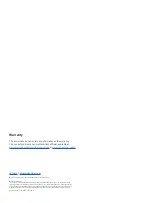
A
B
C
21 L - F
(lamp flashing) displays (
Fig. 40 A
). This option is used with
external warning lamp, typically used if monitoring is installed.
Press
Δ
and change status from
L - F
(lamp flashing) to
L - S
(lamp static) (
Fig. 40 B
).
L - F
is a pulsed output supply and
L -S
is a constant output supply.
22
Select option and press
ENTER
to proceed to next part of
programming.
23 tSt
(test mode) appears in display. Pump starts turning. Correct
pump from turning in wrong direction by changing polarity of
wiring. Check other sensors by energizing them manually and
observing if green LED illuminates. If LED does not illuminate, a
problem exists with wiring or setup procedure.
24
If all is correct, turn off power supply to controller
Fig. 40
NOTE
tSt
must appear on display before switching off power to unit.
System does not save changes if power to unit is turned off
during any part of programming.
tSt
must appear on display for
changes to be confirmed.
Fig. 41
Fig. 42
Fig. 43
Run mode
Unit proceeds in run (
r
) mode after power is terminated on unit and
then switched on again. All devices selected display. After each cycle
received, amount decreases by 1 until all cycles have been reached
and unit proceeds to pause time.
Running system (pump run)
When controller is switched on, run cycle counter (
rCC
) appears in
display. Counter appears from actual counts set and counts down to
zero. Green LED indicates run cycle counter. Green LED on
PUMP
flashes indicating pump is turning or pumping.
Running system (pump pause)
Controller goes into pause time when required cycle count is
reached. Pause (
P
) time counts down from original setup time to
zero and then resumes cycle count. Green LED next to
PUMP
is
steady to indicate pump is there by not turning while in pause mode.
26
27



































